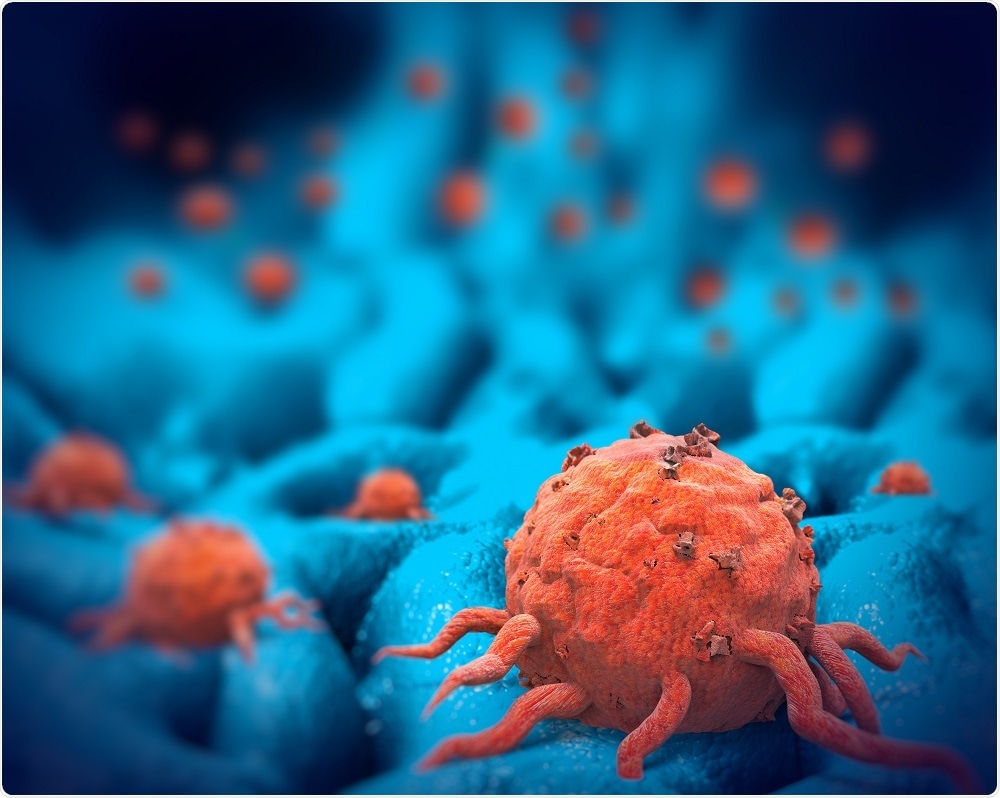Experts in the field of nanomedicine have succeeded in programming nanorobots to target and shrink tumors by cutting off their blood supply, whilst leaving healthy tissue untouched.
 Credit: Giovanni Cancemi/Shutterstock.com
Credit: Giovanni Cancemi/Shutterstock.com
The technology can be applied to treat many types of cancer, since all solid tumor-feeding blood vessels are essentially the same.
The major new advancement is the result of a collaboration between researchers from Arizona State University (ASU) and the National Center for Nanoscience and Technology (NCNST). The findings were recently published in Nature Biotechnology.
We have developed the first fully autonomous, DNA robotic system for a very precise drug design and targeted cancer therapy."
Hao Yan, Director of the ASU Biodesign Institute's Center for Molecular Design and Biomimetics.
Until now, one challenge in advancing nanomedicine has been to design, build and control nanorobots that will actively target and destroy cancerous tissue, without damaging any healthy cells.
Approximately five years ago, the NCNST researchers worked on specifically cutting off tumor blood supply by causing coagulation in solid tumors using DNA-based nanocarriers. Yan has now upgraded the design into a fully programmable robotic system that can perform this mission entirely independently.
The researchers used a well-known mouse tumor model, where the injection of human cancer cells induces aggressive tumor growth. Once the tumour cells had begun growing, the nanorobots were deployed.
Thrombin causes blood within the vessels that feed the tumor to coagulate, thereby blocking tumor blood flow and causing death of the tumor tissue.
Each nanorobot is composed of a rectangular sheet of DNA (90 by 60 nanometers in size) and has a blood-clotting enzyme called thrombin attached to its surface.
These nanorobots can be programmed to transport molecular payloads and cause on-site tumor blood supply blockages, which can lead to tissue death and shrink the tumor."
Baoquan Ding, Professor at the National Center for Nanoscience and Technology
The key to ensuring the nanorobot only attacked tumor tissue was to include a DNA aptamer on its surface that specifically targets a protein called nucleolin, which is found only on the surface of tumor endothelial cells, and not on healthy cells.
The nanorobots congregated in large numbers and surrounded the tumor just hours after they were deployed. They caused tumor tissue damage within just 24 hours, whilst leaving healthy cells undamaged. After three days, thrombi were observed in all tumor vessels.
"The thrombin delivery DNA nanorobot constitutes a major advance in the application of DNA nanotechnology for cancer therapy," says Yan.
The researchers are now pursuing clinical partners to help develop the technology further.
Source:
https://www.eurekalert.org/pub_releases/2018-02/asu-cnp020818.php